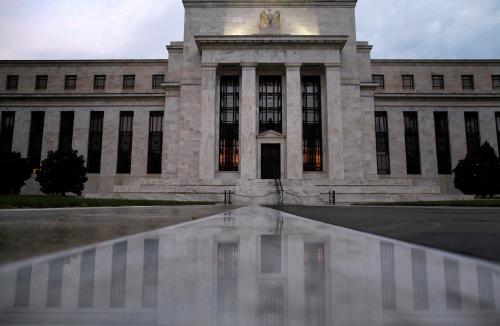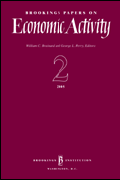Studies in this week’s Hutchins Roundup find that declines in manufacturing employment hurt local economies, aggressive monetary policy only has a small impact on inequality, and more.
Want to receive the Hutchins Roundup as an email? Sign up here to get it in your inbox every Thursday.
Declines in manufacturing employment hurt local economies
Kerwin Kofi Charles, Mariel Schwartz, and Erik Hurst of the University of Chicago explore the link between declines in employment in manufacturing and broader economic outcomes in communities across the United States between 2000 and 2017. They find that a 10 percentage point decline in the share of employment in manufacturing in an area reduced overall employment rates by 3.7 percentage points for prime-age men and 2.7 percentage points for prime-age women. In contrast, changes in manufacturing employment had little effect on local employment rates during the 1980s. The authors argue that two key factors explain the large effect of manufacturing declines in the later period: Manufacturing was becoming increasingly skilled, leading to a mismatch between labor demand and the skills of the displaced workers, and workers became less likely to move across regions in response to local manufacturing shocks. The authors also find evidence that declines in manufacturing were associated with increased prescription opioid use and increased death rates from drug overdoses.
Impact of aggressive monetary policy on inequality in the U.K. has been small
In response to the financial crisis, the Bank of England lowered interest rates and launched a program of large-scale asset purchases. Philip Bunn, Alice Pugh, and Chris Yeates of the Bank of England examine how this lengthy period of accommodative monetary police affected income and wealth inequality. Using the Bank of England’s main forecasting model and survey data on household characteristics and balance sheets, they show that monetary policy had almost no effect on income inequality: it increased labor income and decreased interest income on savings by a similar proportion across the income distribution. They find that monetary policy decreased wealth inequality slightly. Although higher asset prices benefited wealthy households, higher inflation eroded the mortgage debt of middle- and low-wealth families. In addition, higher house prices benefited middle-income families because their wealth is concentrated in housing.
Less available credit for firms leads to slower productivity growth
Francesco Manaresi of the Bank of Italy and Nicola Pierri of Stanford use detailed data on balance sheets and credit for 76,542 Italian firms between 1998 and 2013 to determine how credit supply affects productivity. They find that reducing the supply of credit to a firm slows its productivity growth for up to two years by dampening research and development and the adoption of new technologies; the effect on productivity growth does not revert, meaning that the level of productivity remains lower over the long run. Their results suggest that the credit contraction between 2007 and 2009 can account for about a quarter of the drop in productivity over this period and partly explain persistently sluggish productivity growth in the Italian economy following the financial crisis.
Chart of the week: US prime-age labor force participation is lagging behind other countries

Quote of the week:
“There is a risk that the global economy might fall into a kind of debt trap, if policies in general are unable to address the build-up of debt. In the case of monetary policy, the risk is that the higher debt levels that have gone hand in hand with lower interest rates will make it harder to raise those rates to historically more normal levels. In turn, this would reduce the policy room for maneuver and complicate dealing with the next recession,” says Claudio Borio, head of the Monetary and Economic Department of the Bank for International Settlements.
“The first piece of good news is that no one is under the illusion that the business cycle has vanished, so that there is a lot of thinking devoted to how to tackle one. The second piece of good news is that central banks have gained quite a bit of experience with the new tools, so the range of options is broader. The less good news is that the room for maneuver has narrowed.”










Commentary
Hutchins Roundup: Manufacturing decline, monetary policy and inequality, and more
April 5, 2018